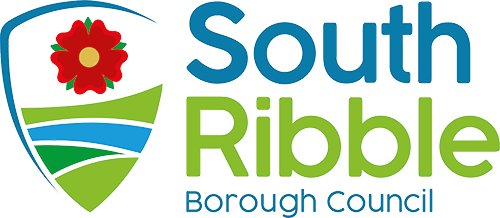Biodiversity Strategy
Planning Context
The area of biodiversity and climate change has grown quickly over the last few years as has the weight and value that is now placed upon these issues locally, nationally and internationally. The Environment Act of 2021 highlights this and means that this Act updates and supersedes many other Acts and subsequently the plans and policies that apply in South Ribble.
The current planning documents are:
- South Ribble Local Plan 2015
Sets out the vision for the borough and the Council's interpretation of the Central Lancashire Core Strategy, including development management policies. It also allocates or protects land for different uses, such as housing, employment or play space. It is used for development management purposes to guide decisions on planning applications.
- Central Lancashire Core Strategy 2012
The Core Strategy (Local Plan) was produced by the Central Lancashire authorities of Preston, South Ribble and Chorley, with assistance from Lancashire County Council. The purpose of the Core Strategy is to set the overall strategic direction for planning in the area over the period from 2010 to 2026, including where major development and other forms of investment should be located so as to be sustainable, meet local needs and take full advantage of opportunities.
- the Central Lancashire Biodiversity and Nature Conservation Supplementary Planning Document 2015
Supplementary Planning Documents (SPDs) provide further detail and guidance in relation to policies and proposals within the development plan. These SPDs form part of the Local Development Framework (LDF) for the Central Lancashire authorities of Chorley, Preston and South Ribble. They are to be considered alongside policy in the Central Lancashire Core Strategy and the Local Plans of the three authorities. The SPD guidance should be taken into consideration from the earliest stages of the development process of any site, including any purchase negotiations and in the preparation of development schemes. - National Planning Policy Framework guidance notes
The National Planning Policy Framework sets out the Government's planning policies for England. It provides a framework within which locally prepared plans for housing and other development can be produced. The purpose of the planning system is to contribute to the achievement of sustainable development. It includes an environmental objective to protect and enhance our natural, built and historic environment; including making effective use of land, improving biodiversity, using natural resources prudently, minimising waste and pollution, and mitigating and adapting to climate change, including moving to a low carbon economy.
The document also identifies that authorities need to positively enhance the beneficial use of identified Green Belt areas to retain and enhance the landscape, visual amenity and biodiversity. Once defined as Green Belt, local planning authorities should plan positively to enhance their beneficial use, by looking for opportunities to provide access; to provide opportunities for outdoor sport and recreation; to retain and enhance landscapes, visual amenity and biodiversity; or to improve damaged and derelict land.
Individual planning decisions must ensure sites of principle importance are protected or enhanced and minimise the impacts on biodiversity. It states that if significant harm to biodiversity from a development cannot be avoided, mitigated or compensated for then planning permission should be refused.
Biodiversity and Geological Conservation: circular 06/2005
This document compliments the national Planning Policy Framework and Planning Practice guidance notes. It deals with the conservation of internationally designated sites such as Ramsar sites and Sites of Special Scientific Interest; the conservation of non-designated areas and the conservation of species.
Levelling Up and Regeneration Bill
Currently before Parliament, this Bill may have a relevance depending on its contents once enacted. This will be monitored and reviewed as necessary.
Biodiversity Net Gain (BNG) and the planning matrix
The Environment Act 2021 requires that from 2023 all planning permissions larger than household permissions deliver a 10% net gain in biodiversity. A mitigation hierarchy will ensure that the most valuable land is saved and not offset. Where BNGs are not possible on the development site they can be compensated via local habitat creation.
The DEFRA biodiversity metric is a habitat-based approach used to assess an area's value to wildlife. The metric uses habitat features to calculate a biodiversity value. It may be used by:
· ecologists or developers carrying out a biodiversity assessment
· developers who have commissioned a biodiversity assessment
· planning authorities who are interpreting metric outputs in a planning application
· communities who want to understand the impacts of a local development
· landowners or land managers who want to provide biodiversity units from their sites to others
Gains are to be guaranteed for 30 years.
BNG will work with an Authority's Local Nature Recovery Strategy and any relevant species conservation strategy or protected site strategy prepared by the nominated Responsible Authority.




